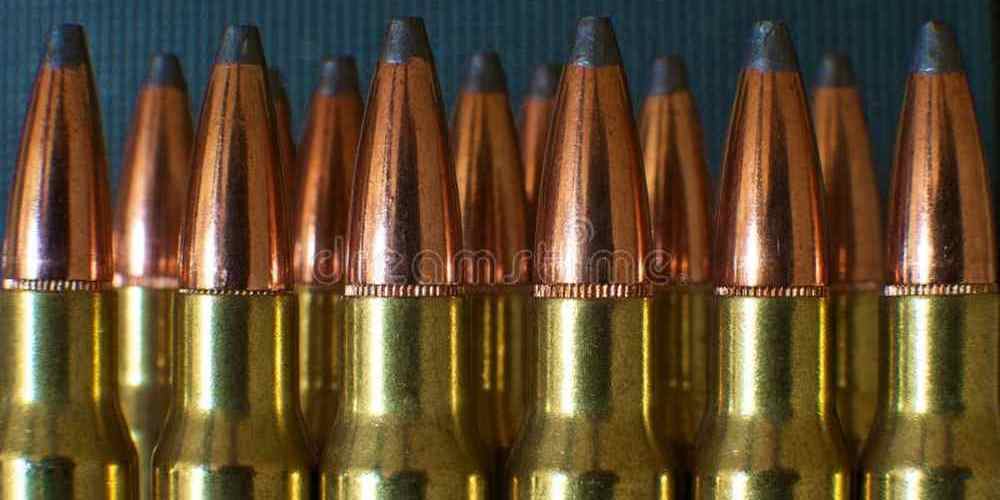Separating fact from fiction in the world of rifle ammunition.
Debunking Common Myths About Rifle Ammunition
When it comes to rifle ammunition, there are many myths and misconceptions that can confuse even the most seasoned gun enthusiasts. From the type of bullet to the caliber of the rifle, there is a lot of misinformation out there that can make it difficult to separate fact from fiction. In this article, we will debunk some of the most common myths about rifle ammunition and provide you with the real facts.
One of the most prevalent myths about rifle ammunition is that a larger caliber bullet always means more stopping power. While it is true that larger caliber bullets can cause more damage upon impact, the key factor in stopping power is actually the velocity of the bullet. A smaller caliber bullet traveling at a high velocity can be just as effective as a larger caliber bullet traveling at a slower speed. It is important to consider both the caliber and velocity of a bullet when choosing ammunition for your rifle.
Another common myth is that steel-cased ammunition is inferior to brass-cased ammunition. While it is true that brass-cased ammunition is generally considered to be of higher quality, steel-cased ammunition can still be a reliable and cost-effective option. The main difference between the two types of casings is that brass is more malleable and can expand and contract with the pressure of the round, while steel is more rigid. This can lead to more wear and tear on the rifle, but as long as you properly maintain your firearm, steel-cased ammunition can be a perfectly acceptable choice.
Many people also believe that handloading your own ammunition is dangerous and can lead to malfunctions or accidents. While it is true that handloading requires a certain level of skill and knowledge, when done correctly, it can actually be a safe and cost-effective way to customize your ammunition to suit your specific needs. As long as you follow proper procedures and use quality components, handloading can be a rewarding hobby that allows you to fine-tune your ammunition for optimal performance.
Some shooters also believe that using +P ammunition in their rifles will cause excessive wear and tear on the firearm. While it is true that +P ammunition is loaded to higher pressures than standard ammunition, modern rifles are designed to handle these increased pressures without any issues. As long as you are using a rifle that is rated for +P ammunition, there is no reason to avoid using it. Just be sure to follow the manufacturer’s recommendations and guidelines for your specific rifle.
In conclusion, there are many myths and misconceptions surrounding rifle ammunition that can make it difficult to navigate the world of firearms. By understanding the facts and debunking these common myths, you can make informed decisions when it comes to choosing the right ammunition for your rifle. Remember to consider factors such as caliber, velocity, casing type, and handloading when selecting ammunition, and always follow proper safety procedures when handling firearms. Armed with this knowledge, you can confidently enjoy shooting sports and make the most of your rifle ammunition.
The Truth About Stopping Power: What You Need to Know
When it comes to rifle ammunition, there are many myths and misconceptions that can cloud the judgment of even the most experienced shooters. One of the most common myths is the idea of “stopping power” – the belief that a certain caliber or type of ammunition is inherently more effective at stopping a threat than others. In reality, stopping power is a complex and multifaceted concept that cannot be boiled down to a simple formula.
To understand stopping power, it’s important to first understand the factors that contribute to a bullet’s effectiveness. These factors include bullet weight, velocity, and design. Bullet weight refers to the mass of the projectile, with heavier bullets generally being more effective at penetrating barriers and causing damage. Velocity, on the other hand, refers to the speed at which the bullet travels, with faster bullets typically causing more tissue damage. Finally, bullet design plays a crucial role in determining how a bullet behaves upon impact – for example, hollow point bullets are designed to expand upon impact, causing more damage to the target.

It’s also important to note that stopping power is not solely determined by the caliber of the ammunition. While larger calibers may have more energy and potential for damage, shot placement is ultimately the most important factor in stopping a threat. A well-placed shot with a smaller caliber can be just as effective as a poorly placed shot with a larger caliber.
Another common myth surrounding rifle ammunition is the idea that more powerful rounds are always better. While it’s true that higher caliber rounds can have more energy and stopping power, they also come with drawbacks such as increased recoil and muzzle blast. For many shooters, a balance must be struck between power and controllability – a round that is too powerful may be difficult to shoot accurately, especially in high-stress situations.
In addition to misconceptions about stopping power and caliber, there are also myths surrounding the effectiveness of certain types of ammunition. For example, some shooters believe that steel-cased ammunition is inferior to brass-cased ammunition. While it’s true that steel-cased ammunition may be less reliable in certain firearms, modern manufacturing techniques have greatly improved the quality of steel-cased rounds. In fact, many shooters find that steel-cased ammunition is just as reliable and accurate as brass-cased ammunition, at a fraction of the cost.
Ultimately, the key to understanding rifle ammunition is to approach the topic with an open mind and a willingness to learn. By dispelling common myths and misconceptions, shooters can make more informed decisions about their ammunition choices and improve their overall shooting performance. Remember, stopping power is not a one-size-fits-all concept – it’s a nuanced and multifaceted aspect of ballistics that requires careful consideration and understanding. So the next time you’re shopping for rifle ammunition, take the time to research and educate yourself on the factors that truly matter – you may be surprised at what you discover.
Understanding the Ballistics of Rifle Ammunition
When it comes to rifle ammunition, there are many myths and misconceptions that can cloud our understanding of how it actually works. In this article, we will delve into the reality of rifle ammunition and explain the ballistics behind it.
One common myth is that all rifle ammunition is the same. This couldn’t be further from the truth. Rifle ammunition comes in a variety of calibers, each designed for specific purposes. The caliber of a rifle cartridge refers to the diameter of the bullet it fires. Different calibers are used for different types of shooting, such as hunting, target shooting, or self-defense.
Another myth is that bigger is always better when it comes to rifle ammunition. While larger calibers may have more stopping power, they also come with more recoil and can be harder to control. It’s important to choose a caliber that is appropriate for your intended use and your own comfort level.
One of the most important factors to consider when choosing rifle ammunition is the bullet weight. The weight of a bullet is measured in grains, with heavier bullets generally having more momentum and better penetration. However, lighter bullets may have higher velocities and flatter trajectories. It’s important to find the right balance between weight and velocity for your specific needs.
Another key aspect of rifle ammunition is the type of bullet used. There are several different types of bullets, including full metal jacket, hollow point, and soft point. Each type of bullet is designed for specific purposes, such as target shooting, hunting, or self-defense. It’s important to choose the right type of bullet for your intended use to ensure optimal performance.
When it comes to ballistics, there are several factors that can affect the trajectory of a bullet. These include muzzle velocity, bullet weight, bullet shape, and wind resistance. Understanding these factors can help you make more accurate shots and improve your overall shooting performance.
Muzzle velocity refers to the speed at which a bullet leaves the barrel of a rifle. The higher the muzzle velocity, the flatter the trajectory of the bullet will be. Bullet weight also plays a role in trajectory, with heavier bullets generally having slower velocities and more drop over distance.
Bullet shape can also affect the trajectory of a bullet. Different bullet shapes, such as round nose or spitzer, can have different aerodynamic properties that affect how they fly through the air. It’s important to choose a bullet shape that is appropriate for your intended use and shooting conditions.
Wind resistance is another factor that can affect the trajectory of a bullet. Wind can push a bullet off course, especially at longer distances. Understanding how wind affects bullet flight and learning how to compensate for it can help you make more accurate shots in challenging conditions.
In conclusion, rifle ammunition is a complex and nuanced topic that requires a deep understanding of ballistics and shooting fundamentals. By dispelling common myths and misconceptions, we can gain a clearer understanding of how rifle ammunition works and how to choose the right ammunition for our specific needs. By considering factors such as caliber, bullet weight, bullet type, and ballistics, we can improve our shooting performance and make more accurate shots.
Dispelling Myths About Overpenetration and Collateral Damage
When it comes to rifle ammunition, there are many myths and misconceptions that can cloud people’s understanding of how it actually works. One common myth is that rifle ammunition always overpenetrates, causing excessive collateral damage. However, the reality is much more nuanced than that.
Overpenetration occurs when a bullet passes through its intended target and continues on its trajectory, potentially hitting unintended targets behind it. While this can be a concern in certain situations, it is not as common as some people believe. In fact, modern rifle ammunition is designed to expand upon impact, which helps to prevent overpenetration.
One of the key factors in determining whether a bullet will overpenetrate is the type of ammunition being used. Full metal jacket (FMJ) bullets are more likely to overpenetrate because they are designed to penetrate deeply into a target without expanding. On the other hand, hollow point bullets are designed to expand upon impact, which helps to transfer more energy to the target and reduce the risk of overpenetration.
Another important factor to consider is the velocity of the bullet. Higher velocity bullets are more likely to overpenetrate because they have more energy and momentum. This is why it is important to choose the right ammunition for the job, taking into account factors such as the distance to the target and the potential for collateral damage.
It is also worth noting that overpenetration is not always a bad thing. In some situations, such as when facing multiple attackers or shooting through barriers, overpenetration can actually be beneficial. It can help to incapacitate multiple threats or penetrate obstacles that would otherwise impede the bullet’s path.
When it comes to collateral damage, the key is to use proper shot placement and choose the right ammunition for the job. By aiming for vital areas on the target and using ammunition that is designed to expand upon impact, you can minimize the risk of causing unintended harm to bystanders.
In conclusion, the myth that rifle ammunition always overpenetrates and causes excessive collateral damage is not entirely accurate. While overpenetration can be a concern in certain situations, modern ammunition is designed to expand upon impact and reduce the risk of overpenetration. By choosing the right ammunition and practicing proper shot placement, you can effectively dispel these myths and use rifle ammunition safely and responsibly.
Exploring the Realities of Rifle Ammunition Performance
When it comes to rifle ammunition, there are many myths and misconceptions that can cloud the understanding of its performance. In this article, we will explore the realities of rifle ammunition and dispel some of the common myths surrounding it.
One of the most prevalent myths about rifle ammunition is that a higher caliber always means better performance. While it is true that larger calibers can deliver more energy and have a greater impact on the target, this does not necessarily mean they are always the best choice. Factors such as bullet design, velocity, and shot placement play a significant role in determining the effectiveness of a rifle round.
Another common myth is that all rifle ammunition is created equal. In reality, there are many different types of rifle ammunition, each designed for specific purposes. For example, hunting rounds are typically designed to expand upon impact, causing maximum damage to the target. On the other hand, target rounds are designed for accuracy and consistency, making them ideal for competitive shooting.
It is also a misconception that all rifle ammunition is capable of long-range shooting. While some rounds are specifically designed for long-range accuracy, others may not perform as well at extended distances. Factors such as bullet weight, velocity, and ballistic coefficient all play a role in determining the effective range of a rifle round.
One of the most persistent myths about rifle ammunition is that hollow point bullets are more deadly than full metal jacket bullets. While hollow point bullets are designed to expand upon impact, causing more damage to the target, this does not necessarily make them more deadly. In fact, full metal jacket bullets are often preferred for military and law enforcement use because they are less likely to over-penetrate and cause collateral damage.
When it comes to rifle ammunition, there is also a misconception that handloading is a dangerous practice. While it is true that handloading requires careful attention to detail and adherence to safety protocols, it can be a rewarding and cost-effective way to customize your ammunition for optimal performance. With the right equipment and knowledge, handloading can result in ammunition that is more accurate and consistent than factory-made rounds.
In conclusion, rifle ammunition is a complex and diverse topic that is often shrouded in myths and misconceptions. By understanding the realities of rifle ammunition performance, shooters can make informed decisions about the best ammunition for their needs. Whether hunting, target shooting, or long-range precision shooting, there is a rifle round designed to meet your specific requirements. By dispelling the myths surrounding rifle ammunition, shooters can gain a deeper appreciation for the science and technology behind these powerful projectiles.






